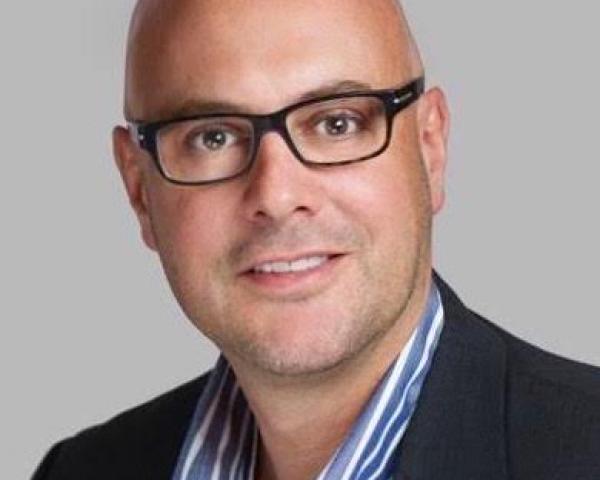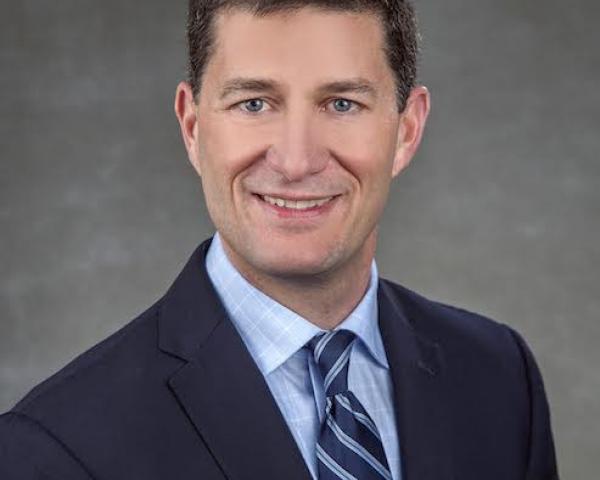If you’ve read Part One of this series, you’ll have got your crash course in parametric insurance and can now call yourself an expert (relatively speaking). In the article, I promised to give a short overview of the 12 companies I think worth looking at that are examples of how parametric insurance works, and what the future might look like. But first a quick summary of Part One:
- Parametric insurance is emerging as a way to provide financial protection against losses that are often hard, or even impossible, to get insured for.
- Parametric insurance has been around for over 20 years. Today, it makes up around 15% of issued catastrophe bonds in a $100 billion market.
- Access to more data and more reliable sources of how that data is transferred is opening up an opportunity to take parametric insurance to companies small, medium and large. The access is also offering new ways to address the global insurance gap.
Now, here’s my list, ordered approximately by theme, rather than any specific ranking. Leaderboards have their place, but outside the established market for catastrophe bonds the area of parametric insurance is still too diverse, and broadly unproven, to attempt to rank companies. At least not yet.
AIR Worldwide (Owned by Verisk)
AIR’s U.S. hurricane catastrophe model was used for the first major catastrophe bond, issued by USAA, in 1997, providing $400 million of protection. AIR continues to provide one of the two most commonly used suites of catastrophe models. Reinsurers, brokers and insurers run cat models to price and manage natural catastrophe risk in most major countries. AIR has probably been the most frequently used modeling agent for U.S. hurricane catastrophe bonds in the last decade, and the company provided the analysis for the WHO pandemic catastrophe bond.
RMS
RMS and AIR have been jostling for position as the leader in providing insurance linked securities (ILS) catastrophe bonds to the global insurance industry. The RMS capital markets team has been behind some of the most complex and innovative catastrophe bonds, and RMS has been particularly strong in creating well-designed parametric triggers. Examples of bonds that RMS has worked on include Golden Goal, which provided $262 million of terrorism cover for FIFA for the 2006 World Cup. RMS was also behind the New York Mass Transit Authority (MTA) $200 million storm surge bond in 2013, issued following MTA's unexpected and largely uninsured losses of $4.7 billion from Hurricane Sandy.
As I mentioned in Part One, Artemis has the most comprehensive directory of catastrophe bond issued, if you want to learn more about what RMS, AIR and EQECAT (since acquired by Corelogic) have worked on.
See also: Growing Case for Parametric Coverage
New Paradigm Underwriters
This is one version of what the future may look like as parametric insurance moves upstream to the company market. Founded in 2013, New Paradigm pre-dates the term "insurtech," but as an MGA using new technology in a smart way it is one of the pioneers in this space. The company offers supplemental U.S. hurricane insurance for businesses that want added coverage for exclusions from the conventional policies on offer from insurers. The company's first product used an index derived from recorded wind speed as the payout trigger, and the company is now diversifying into terrorism cover.
A quick side note here. It was discovered in the early history of parametric hurricane bonds that conventional windspeed recorders that were relied on to measure windspeed (and hence define if the bond had triggered) had a tendency to blow away when conditions got unusually gusty. New Paradigm, and others structuring windstorm parametric triggers, now use data from the WeatherFlow network. It has installed over 100 windspeed recorders designed to survive winds of 140 mph and requiring no external power.
FloodFlash
Adam Rimmer and Ian Bartholomew, the founders of FloodFlash, started their careers at RMS and got their passion for parametric insurance when working on the New York MTA bond. The company's seed funding came from U.K. investor and incubator Insurtech Gateway three years ago. Still relatively modestly funded (£2 million, according to Crunchbase), FloodFlash is one of the best examples of parametric insurance being used today to provide a solution where traditional insurers have declined cover.
In the U.K., most homeowners get flood protection thanks to the government’s Flood Re initiative, but commercial businesses are excluded. FloodFlash models the flood risk at a high resolution and sells building-specific parametric insurance. The company operates as an MGA and sells via brokers. A FloodFlash sensor is attached to a building and triggers a payment almost instantly when the water rises to a pre-agreed depth. With hundreds of clients already signed up in the U.K., FloodFlash proved its worth after Hurricane Caura hit the country earlier this year -- “the fastest payout by a parametric insurance product that I’ve ever seen,” according to Steve Evans of Artemis.
Global Parametrics
Global Parametrics was launched in 2016, the brainchild of Professor Jerry Skees, and run today by Hector Ibarra, formerly of the World Bank and Partner Re. With funding that includes support from the U.K. government’s DIFD and Germany’s KfW, the company is building parametric products to support organizations and people in the developing world who lack insurance coverage or can’t afford it. Global Parametrics has commissioned its own models for climate-related losses around the world and is building out partnerships with other leading providers. Its customers include microfinance lending organizations and NGOs such as VisionFund. The company provides payments through disaster recovery payments, which can be used to help get vulnerable communities back on their feet after a flood, drought or other natural disaster. The team is well connected and has strong technical chops, definitely one to watch. Catch Hector live or listen to the recording of our chat on our BrightTALK channel.
Descartes Underwriting
It's one thing to build the technology for parametric insurance, but someone needs to have the confidence to underwrite it. Descartes is a Paris-based underwriting specialty insurer and is open-minded in what it covers as long as it gets "proper data.” Coverage so far has included property damage, business interruption from natural catastrophes, losses from droughts and losses from excessively high or low temperatures. Descartes has covered industries in areas such as agriculture, mining, construction, renewable energy and supports banks in protecting their loans and assets. Sebastien Piguet, co-founder and head of underwriting at Descartes, spoke to us on stage in April last year, and you can hear him on Episode 23 of the InsTech London podcast
Jumpstart Recovery
Getting claims paid from traditional insurance cover can take weeks, or even longer after a major catastrophe, but the costs kick in immediately. California earthquake insurance is expensive,and there are few affordable options to the rather limited state-backed California Earthquake Authority. Kate Stillwell, an engineer and earthquake modeler, started Jumpstart in 2015 with the aim of providing much-needed funds to increase the financial resilience of communities and provide economic stimulus immediately after an earthquake. Jumpstart accesses the peak ground velocity of the earthquake recorded by the USGS (U.S. Geological Survey) and aims to pay claims after 24 hours. The cover is currently limited to $10,000 per person, for residents of California only, and users need to certify, by text, that there has been damage and loss. Jumpstart has been supported SCOR’s Channel Syndicate.
Exante
One of the best ways to reduce loss from natural disasters is to provide funds to help people act before an event even happens. There is a lot of work going on to improve resilience from natural disasters through improvements in construction, often at a city or state level, but actions taken by individuals before disasters hit can also make a big difference. No one’s yet figured out how to forecast earthquakes, but Chris Lee, Dublin-based founder of Exante, launched his company in 2019 with backing from Shipyard Technology Ventures. Its aim is to help increase hurricane resilience for companies and their staff with a new approach to using parametric cover. Exante has designed a payout approach that is developed and calibrated using near-time forecasts of U.S. hurricane severity and landfall. If a hurricane looks likely to make landfall, funds will be released in the hours before a hurricane strikes. Payments will be made directly to Exante’s clients’ employees to help cover the costs of protecting their homes or evacuation expenses. It’s early days yet for the company, but contingency finance for risk prevention is a smart way to reduce losses.
African Risk Capacity
The African Risk Capacity (ARC) is a specialized agency of the African Union established to help governments improve their abilities to plan for, prepare for and respond to extreme weather events and natural disasters. ARC is using parametric triggers to provide contingency funding, and ARC Insurance creates pools of risk across Africa, which are then insured in the global markets. One of ARC’s parametric covers had a wobble in 2016, when a major drought in Malawi caused a large loss for farmers, but due to a problem in how the modeled index was set up didn’t trigger a payment as was intended. ARC ended up agreeing to pay a contribution toward the costs, but the wobble is a reminder that parametric insurance is sensitive to modeling assumptions and data, and that payouts may not always match the financial losses suffered (a problem termed “basis risk).
See also: Travel Insurance: An Exemplary Experience
Blink
Paul Prendergast set up Blink in 2016 to provide flight cancellation insurance and earlier this year announced the launch of “Blink Parametric.” Back in the normal world we knew a few weeks ago, Blink Travel offered a cash payout or vouchers for hotel stays to customers who missed a flight, all fully automated. A recent development is Blink Energy & IoT, aimed at domestic appliance insurance and industrial IoT, offering protection for problems such as unexpected increase or decrease in energy usage. Blink's partners include Generali, Munich Re and Manulife. Paul reckons he’ll have three million customers by the end of this year.
Arbol
Arbol was set up in 2018 by former banker and commodities trader Siddhartha Jha to provide weather-related crop cover for farmers and others. The team is using highly localized data sets accessed from IoT sensors and satellites to create bespoke cover down to individual field level and is selling these through an established insurer broker network. The market in the U.S. for agriculture insurance is limited due to government subsidies, but demand globally is significant, and a lack of crop insurance, particularly in developing countries, is one of the biggest contributors to the global insurance protection gap. I’ll be recording an interview with Siddhartha later this year.
Qomplx
Formerly known as Fractal, Qomplx has the experience, beefy technology and access to data for rapidly analyzing risk across many industries. The insurance business is headed by President Alastair Speare-Cole, previously chief underwriting officer of Qatar RE, CEO of broker JLT Re and chairman of Aon Benfield Securities. Qomplx has a number of initiatives in the pipeline. It recently launched its first parametric product, WonderCover, backed by Chaucer and offering cyber and terrorism cover for small to medium-sized enterprises (SMEs). Alastair and his team supported our live chat event on April 30 on our BrightTALK channel.
In conclusion..
It’s not possible to get every company offering parametric insurance onto a list of 10, and this is certainly not intended to be the definitive top 10. (Although unlike some lists of “top insurtech companies” I’ve come across, at least all these companies are all still in business at the time of writing.) None of the main brokers are mentioned, but the big three (or should that be two?) are key in working with insurers and insureds to help communicate and structure all but the smallest risks. As a supporter of InsTech London, Aon gets a shout out here as one of the longest-standing experts in this field.
There are other companies we’re watching closely and have had on stage at InsTech London. Please let me know of other (decent) companies you are aware of with parametric solutions.
And look out for more live events on this topic soon. I'll also be hosting chats on post-pandemic coverages. Registration on BrightTALK.
Finally, if you are a company that would like to be considered for a future article, being a member of InsTech London or having a great photo of your equipment or your tech….
If you enjoyed this, found it useful or maybe both, then you may find something of interest in my other articles. You can also hear me talking to the industry's leaders and innovators each week on the InsTech London podcast channel (available on Apple, iTunes, Spotify etc). And for a weekly check-in on what's going on and what we think about it, you can get our two-minute, handcrafted newsletter delivered to you each Wednesday morning - sign up here.






















